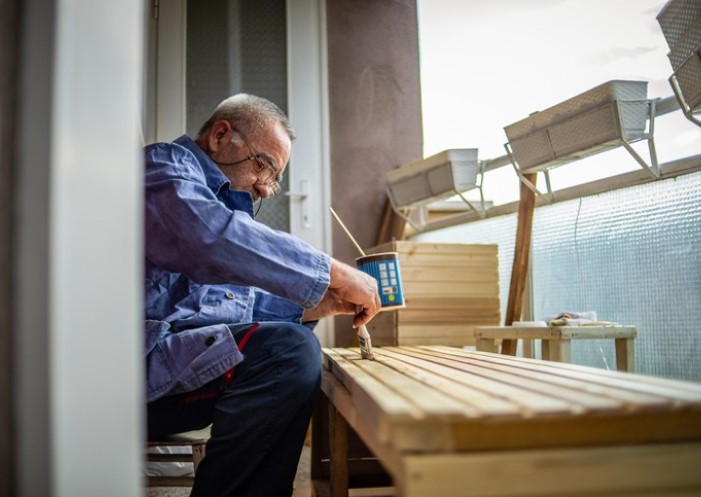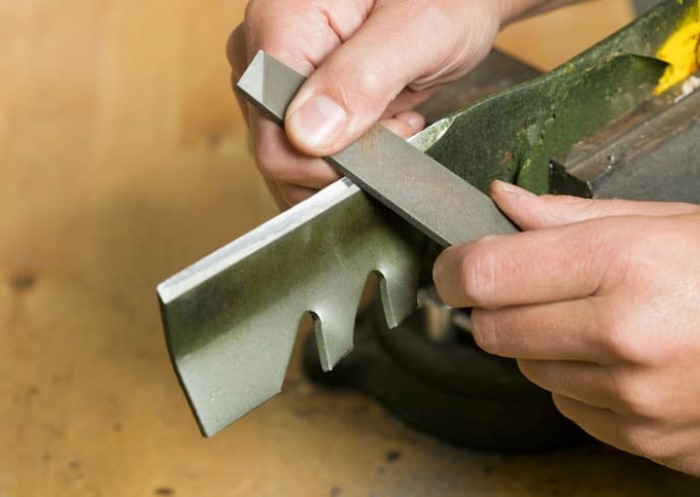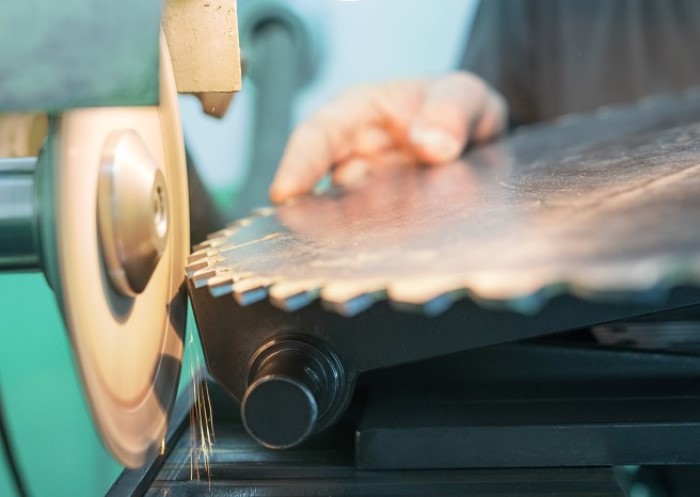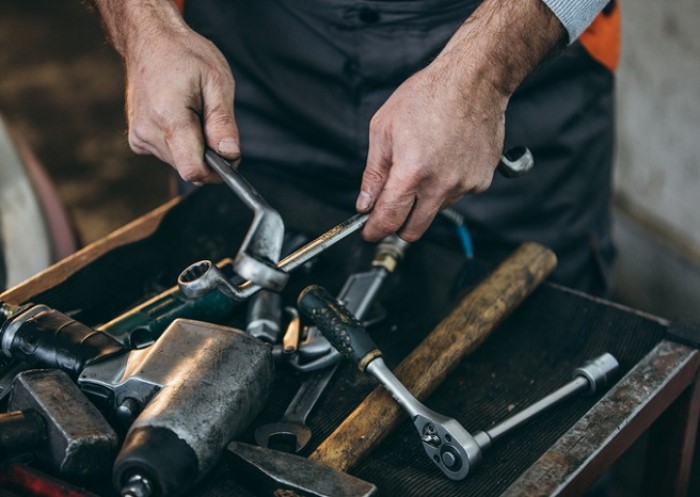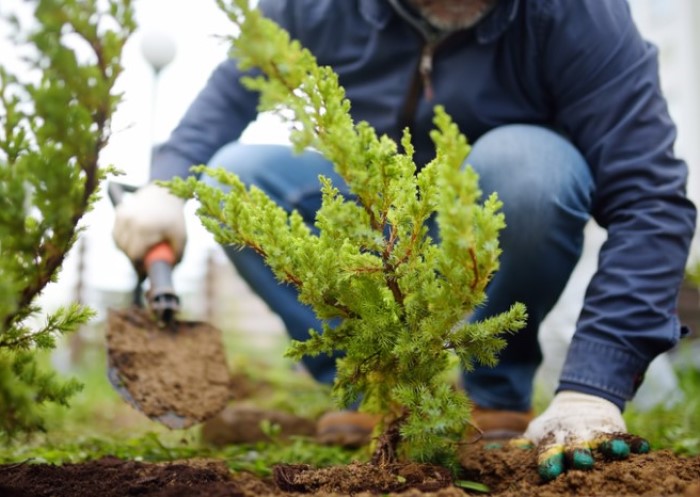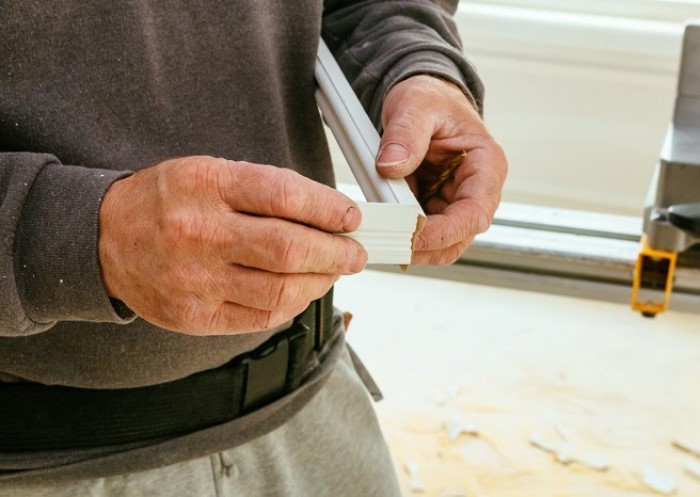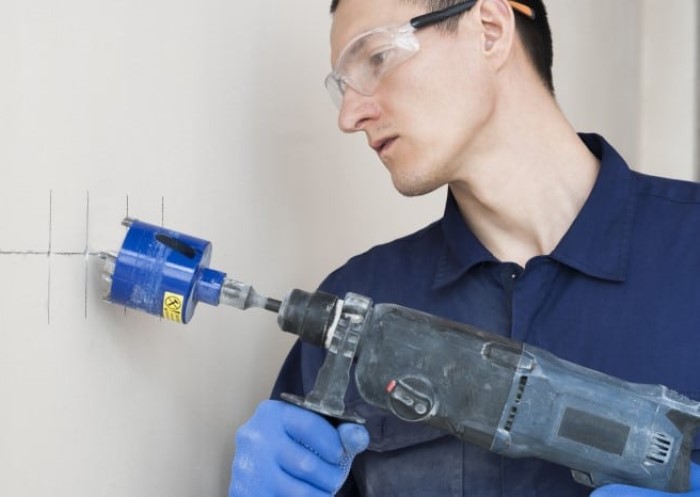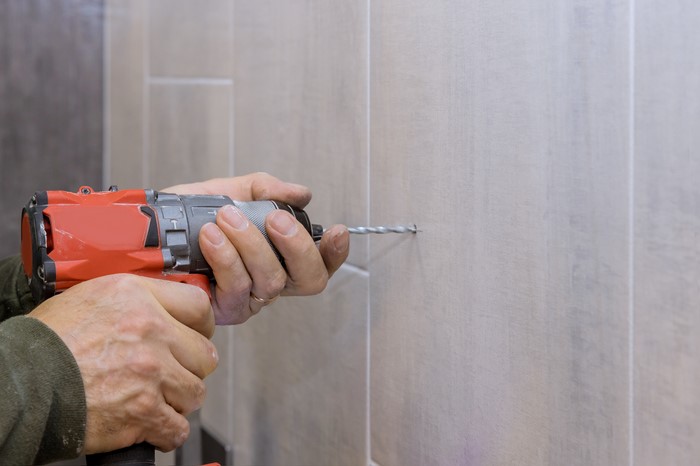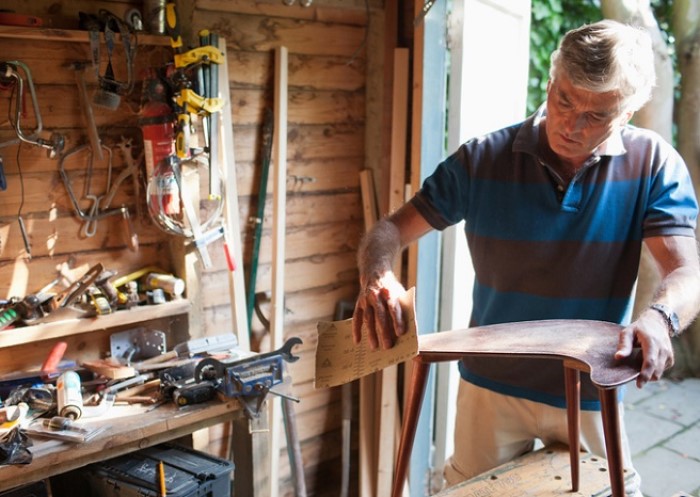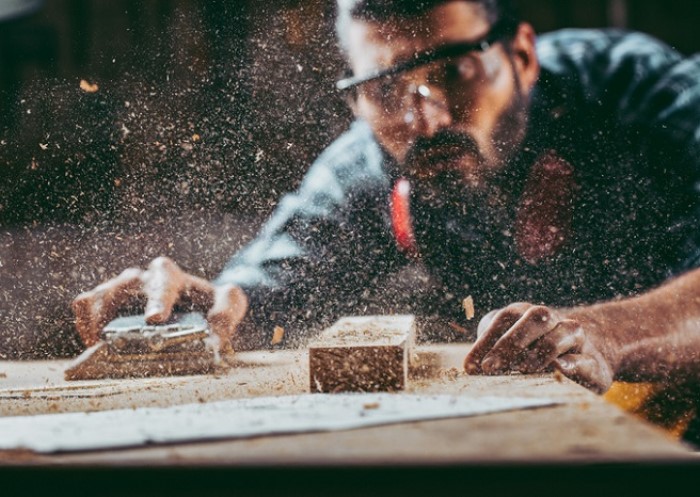Table of contents
Wood is one of the most popular materials for both indoor and outdoor building projects. When used correctly, it can create a warm, inviting and homely atmosphere, whether for flooring, furniture or building a house.
However, to maintain its quality and aesthetics over time, wood needs special care and attention. Protecting wood from moisture, temperature changes and direct sunlight are all essential to preserving its beauty and durability.
The good news is that proper wood maintenance can be remarkably easy when you understand the basics. By cleaning wooden surfaces regularly and treating them with the correct products, you can protect your favourite pieces from the weather, as well as general wear and tear, and extend their longevity indefinitely.
Choosing the right products for wood care
Most woods require a surface treatment to protect them from the elements and extend their lifespan. The best treatment for protecting wood depends on whether it’s for indoor or outdoor use and the desired final appearance.
Here are some common timber care products, their properties and suitable applications:
| Varnish | Glaze | Oil | Wax | |
|---|---|---|---|---|
| Interior | ✓ | ✓ | ✓ | ✓ |
| Courtyard/Patio | ✓ | (✓) | (✓) | ✗ |
| Moisture protection | ✓ | ✓ | ✓ | ✓ |
| Protection against waterlogging | ✓ | (✓) | ✗ | ✗ |
| UV protection | ✓ | ✓ | ✓ | ✓ |
| Scratch protection | ✓ | ✗ | ✗ | ✗ |
| Absorbs into the wood | ✗ | ✓ | ✓ | ✓ |
| Opaque | ✓ | ✗ | ✗ | ✗ |
If you buy wooden furniture or flooring, be sure to find out whether the wood has been treated and if so, what it has been treated with. When you are clear on that, you can then consider how to best protect the wood, what woodworking tools are suitable for use and which products you can apply.
It is important to note that you should never switch between different wood treatment agents. Once wood has been oiled, it cannot be coated with a wood glaze, and vice versa.
Choosing the right treatment is a big decision and the pros and cons of each should be carefully weighed before deciding which treatment is the most suitable and achieves the desired effect. That way, you only need to perform periodic wood maintenance and do not have to completely re-sand and seal once you find a treatment is unsuitable.
To help you decide, we go into greater depth on the pros and cons of each woodcare product below:
Wood glaze
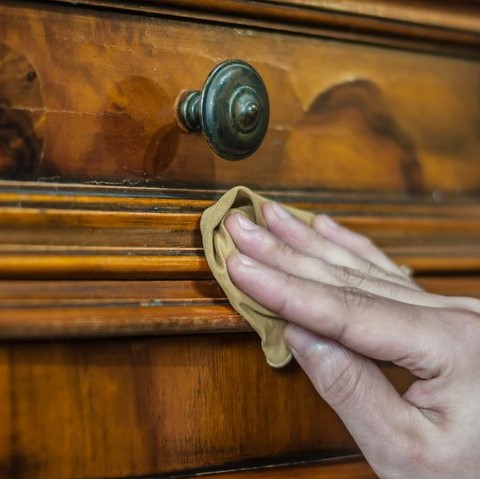
Wood glaze effectively protects wood from moisture and UV radiation both indoors and outdoors. Rather than forming an additional protective layer, it penetrates the wood to leave the grain and structure visible. This effect makes wood glaze one of the most popular surface treatments.
Although two coats are typically sufficient for protecting wood against water, the surface remains susceptible to scratches and small cracks, through which moisture can still penetrate the wood (particularly in the case of waterlogging). For this reason, wood glaze is only suitable for outdoor use to a limited extent.
Decorative wooden surfaces or furniture that aren’t heavily used can certainly benefit from glazing. However, it requires regular reapplication and wood care. For wooden patios or terraces, it’s best to avoid glazing.
Wood varnish
The safest way to protect wood from moisture is to varnish it. Wood varnish does not absorb into the material but rather forms a surface layer that repels water and dirt. Varnish also reliably protects the wood from UV damage. The wood structure is much less visible under the varnished layer; however, fans of a natural wood aesthetic can use a clear varnish so that the grain remains visible.
Coloured paint or varnish, on the other hand, has the advantage that badly worn and unsightly surfaces can be hidden so that the wood looks as good as new.
Wood varnish is ideal for heavily used interior and exterior surfaces because it creates an additional protective layer.
Wood oil
When you oil wood, the pores of the material remain open. The wood can continue to “breathe”. As a result, it contributes to the overall health of the wood. However, the protective properties of wood oil do not last nearly as long as varnish or glaze. That means proper wood care is needed to maintain the same protection. Wood oil should be reapplied at least once every 6 months (even shorter for heavy use).
Even so, after oiling wood remains sensitive to scratches and waterlogging. Water splashes, condensation and small puddles should be cleaned promptly to avoid a stain or lasting damage. Oil treatment is also not effective against water damage.
Wood oil is largely made from natural materials and is therefore an environmentally friendly alternative to artificial paints and chemical wood preservatives. Linseed oil is most often used for protecting wood. However, always refer to the manufacturer’s instructions to see what wood treatment has already been applied.
Often, chemicals are added to speed up the drying process and increase the curing of the oil. Organic manufacturers offer products with minimal additives. A great alternative to chemicals for wood maintenance and protection is beeswax.
Wood wax
Wax is naturally water- and dirt-repellent and therefore particularly well suited for wood care. However, its protective qualities do not last for a long time. The surfaces also remain prone to scratches and abrasions. For this reason, wax is only recommended for indoor wooden furniture.
The huge advantage of using wax is that, once applied, wooden surfaces can then be polished with a soft cloth to create a rich, matte shine.
What natural wood care products are available?
If you are interested in sustainable building, then natural wood care is a great place to start. There are several options but, as a rule, natural oils and waxes are typically free of chemical additives and do not pollute the environment during the manufacturing process.
How to polish wood with homemade, natural polish
You can restore the shine to wooden furniture that has become dull over time by polishing it. You can make a universal polish for various types of wood using just a few home remedies. Start with a natural oil such as walnut, linseed oil or beeswax, which you can purchase in blocks or as portioned samples.
Method and application process:
- Slowly heat 100ml of oil and 20g of beeswax in a saucepan over boiling water, stirring continuously.
- Once the wax has completely dissolved, pour the mixture into a resealable container.
- Allow the mixture to cool so that it hardens.
- Remove some of your natural wood polish from the container with a dry, lint-free cotton cloth and apply it to the surfaces of furniture, kitchen utensils or flooring in circular motions.
- After application, let the treatment absorb into the wood and remove any excess wax with a dry cloth.
- Wait a few minutes, then apply another layer of polish with a dry, soft and lint-free cloth to ensure a silky finish.
Caution: Textiles soaked in linseed oil are highly flammable. Therefore, never simply throw crumpled rags or cloths soaked in linseed oil into the bin after performing wood maintenance. The chemical reaction with the air can cause heat build-up, which can then lead to spontaneous combustion. Allow textiles that have come into contact with linseed oil to dry in a well-ventilated place before disposing of them.
Wood care instructions
This is how to best protect wood from water and environmental damage:
- Sand the wood
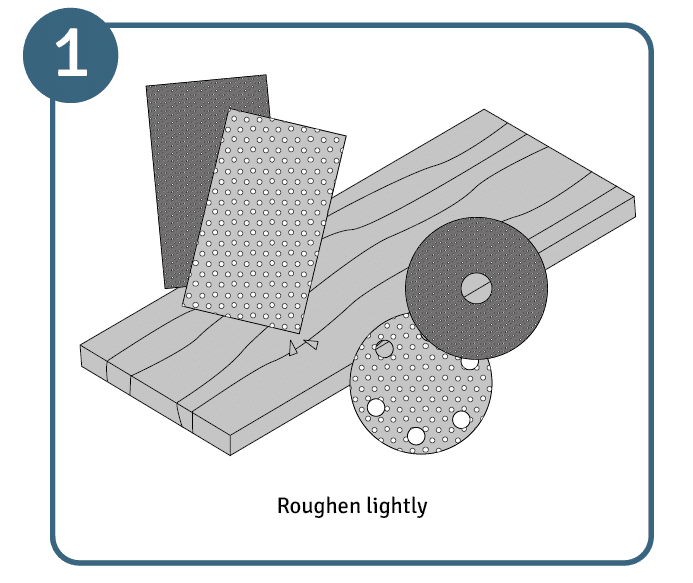 First, sand the wood to completely remove old layers of paint. To care for oiled, waxed or untreated wood, lightly roughen the surface with sandpaper. This allows the treating agent to absorb evenly and dry quickly.
First, sand the wood to completely remove old layers of paint. To care for oiled, waxed or untreated wood, lightly roughen the surface with sandpaper. This allows the treating agent to absorb evenly and dry quickly. - Clean the wood
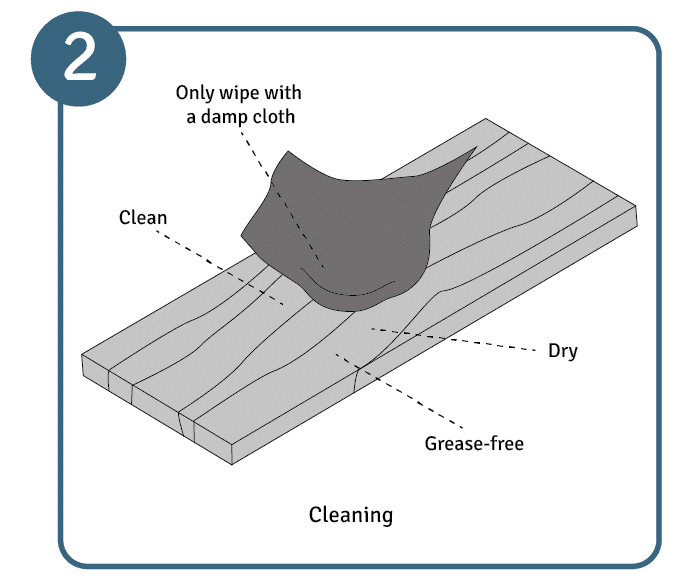 Before applying any further treatment, you must clean the wood thoroughly. The surface of the wood needs to be clean, dry and free of grease so that the wood care product of your choice can be absorbed evenly and dry well. Usually, it is sufficient to wipe the wood with a dry cloth. You can remove dust and sanding residue from hard-to-reach corners and crevices with a vacuum cleaner.
Before applying any further treatment, you must clean the wood thoroughly. The surface of the wood needs to be clean, dry and free of grease so that the wood care product of your choice can be absorbed evenly and dry well. Usually, it is sufficient to wipe the wood with a dry cloth. You can remove dust and sanding residue from hard-to-reach corners and crevices with a vacuum cleaner.
For heavier or harder-to-clean dirt, you can also use water and a small amount of mild dish soap. However, make sure that you only wipe the wood with a damp cloth and let the surface completely dry before continuing. - Treat the wood
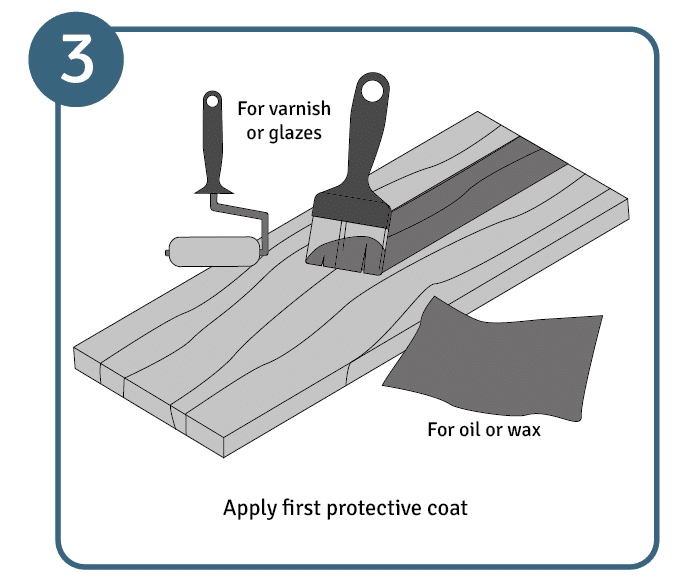 Now, for basic timber care, start by applying the first layer of the varnish or glaze with a wide brush or a small paint roller. Gently rub wood oil or wax into the surface with a soft cloth that will not scratch the surface (do not use a microfibre cloth!) until the wood no longer absorbs any more oil. Then, wipe off the residue thoroughly.
Now, for basic timber care, start by applying the first layer of the varnish or glaze with a wide brush or a small paint roller. Gently rub wood oil or wax into the surface with a soft cloth that will not scratch the surface (do not use a microfibre cloth!) until the wood no longer absorbs any more oil. Then, wipe off the residue thoroughly.
After that, the wood must dry completely. Generally, this can take around 24 hours. The exact drying time can typically be found in the manufacturer’s specifications. - Make the wood resistant
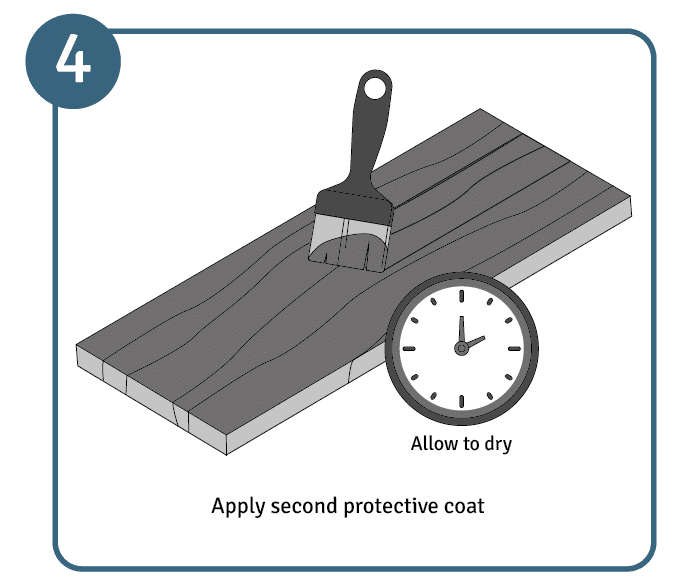 A second layer of the care product should be applied to protect the wood from long-term weather damage and wear and tear. Proceed exactly as before and then wait at least 24 hours before stepping on the wooden floor or using the wooden furniture again.
A second layer of the care product should be applied to protect the wood from long-term weather damage and wear and tear. Proceed exactly as before and then wait at least 24 hours before stepping on the wooden floor or using the wooden furniture again.
Weather protection extends wood durability
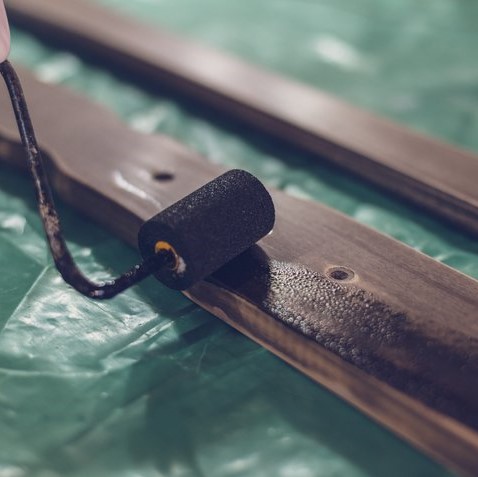
Although, as a raw material wood, is sensitive to weather and environmental conditions, wood can still be used as a building material. Taking into account the unique properties of different types of wood and usage classifications, it has been used to create resilient and durable buildings for centuries. This might seem contradictory, but the right timber care and treatment makes it possible.
Depending on the application, you can use oil, wax or similar to care for untreated wood and make it resistant to dirt, moisture and signs of wear. Proper wood care is much the same as caring for metal, in that it can considerably extend the lifespan of the raw materials and protect against premature wear.
Of course, it is best that wood is properly treated in the first place, saving work later down the road. Proper wood care and maintenance can protect against the following risks:
- Water: Rain or moisture can penetrate deep into the interior of the wood through open pores, causing the wood fibres to swell. During the subsequent drying process, the damaged wood fibres create a rough surface. It is therefore essential to protect wood from water, because moisture also creates optimal growth conditions for mosses and fungi. If wood remains too moist for an extended period, it can begin to rot and decompose.
- UV radiation: Excessive dryness and direct sunlight dry out wood, making it brittle and weak. This can lead to the formation of structurally damaging cracks. In addition, sun damage can make a previously vibrant piece of wood look dull and lifeless.
- Insects: Trees are the natural habitat of countless insects and small creatures. That is why they favour nesting in wooden furniture and decking. Termites and woodworms can be a severe problem as they burrow their tunnels into wood. This makes load-bearing beams or floorboards structurally unstable.
- Wear and tear: Walking on wooden floors with dirty shoes or moving furniture without floor protectors causes scratches or dents that damage the wood’s appearance.
If water or moisture penetrates the wood, the fibres will swell. During the subsequent drying process, the wood fibres straighten up. This leads to a rough surface that should be sanded down before further treatment.
How to protect wood from water outdoors
Outdoor wooden component’s worst enemies are moisture and waterlogging. If you want to build a terrace, fence or shed made of wood, you can prevent the surfaces fromexposure to rainwater or condensation from the outset through targeted wood care.
To do this, you can:
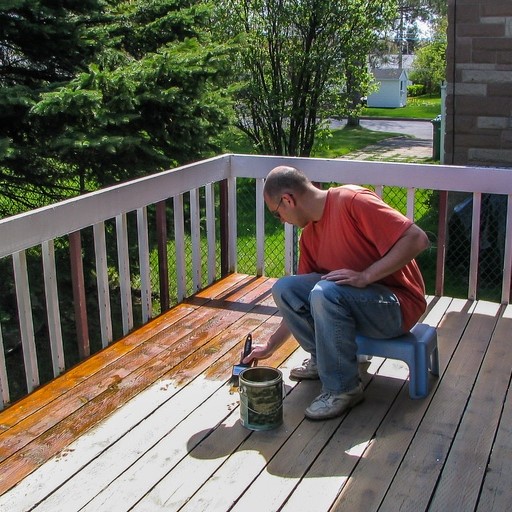
- Add a concrete or cement foundation: If you want to protect wood from ground moisture, you should not insert wooden posts, fences or the substructure of a terrace directly into the ground. Instead, secure them to a poured cement foundation with metal anchors. That way, no moisture from the soil can penetrate the raw material, and the wood is protected from rot for much longer.
- Bevelled surfaces: Make sure that the upper end of wooden components is always slightly slanted and has a surface that is as smooth as possible – this allows rainwater to drain straight off. If desired, you can also protect the wood from moisture with a layer of sheet metal. This will prevent puddles from forming, through which water can slowly penetrate wood fibres and soften them. Decking boards should always be placed sloping away from the house to prevent water from sitting or seeping into your home.
- Wooden cladding: If you are beautifying your house or garden shed with wooden cladding, the right installation technique will help to protect against moisture damage. Boards for wooden cladding are provided with a groove on one side and a tongue (narrow, protrusion that slots into the groove) on the other, so that they can be connected easily. When assembling, make sure that the groove side of the boards is facing downwards. This prevents rainwater from collecting in the grooves.
Even if you take these measures into account, only a wood care sealant with the right properties can offer lasting protection against water.
FAQ about wood care
With the right timber care products, you can protect wood against adverse weather such as moisture and UV radiation. Special glazes, varnishes, oils and waxes protect wooden surfaces and counteract signs of wear.
Which product is best suited for wood care depends on the type of wood and the environment it is being used in. For indoor areas, it’s best to use wood oil and wax. To protect wood from waterlogging or moisture outside, varnishes are typically the better choice.
Old layers of paint should be completely removed and sanded off. If you want to care for oiled, waxed or untreated wood, it is sufficient to lightly roughen the surface with sandpaper. This allows the wood agent to be absorbed evenly and dry quickly.
To determine when wood care is necessary, you should take a closer look at the surface. If you notice signs of wear, scratches, fading or changes in colour, it is time to reapply paint or oil. As a rule, wood should be treated once a year to renew the protection and boost its lifespan.
It’s generally recommended to treat wooden surfaces with a maintenance product at least once a year to keep them in good condition. However, depending on the degree of wear and weather conditions, it may be necessary to care for the wood more often.
Image source:
© gettyimages.de – Milan Markovic, marcduf, Simone Madeo, aywan88

